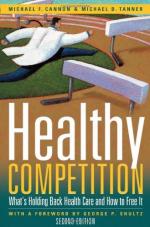|
This section contains 355 words (approx. 2 pages at 300 words per page) |
Competition is the situation that arises when two or more organisms require the same limited resource. The organisms involved can be of the same species (intra-specific competition) or from different species (inter-specific competition). Competition can occur over nutrients, light, space, a mate or any other item that an organism requires to successfully complete its life cycle.
Competition can be resolved in several ways, including the death of one of the competitors, the utilization of other resources by one or both of the competitors, the death of one species, the migration of individuals or of species, different temporal utilisation of the available resources, physiological changes which allow a different set of resources to be used, or both competitors living together but each suffering from a reduced fitness and viability.
When species compete for resources it is ultimately to the detriment of one or other of the species involved, sometimes both. It is for this reason that two different species rarely occupy identical ecological niches. The closer the ecological niche the more fierce is the competition. This is known as the competitive exclusion principle, by the action of fierce competition two species will not inhabit the same area.
Competition is a powerful driving force in evolution, allowing only the most suitably adapted organism or species to survive when resources are limited. Competition ensures survival of the fittest. It must be remembered that an organism which is the fittest at one time and place may be out competed if the conditions change or if the organism moves to a new environment, competition is constantly occurring and any organism can be replaced by another if the ability to compete successfully is lost.
Competition can also occur at a biochemical level where two different molecules attempt to bind exclusively at the same site on a third molecule. An example of this form of competition would be that seen between carbon monoxide and oxygen for the same binding site on a molecule of haemoglobin. With this example the haemoglobin binds preferentially and permanently to the carbon monoxide, reducing the ability of the blood to carry oxygen around the body.
|
This section contains 355 words (approx. 2 pages at 300 words per page) |


